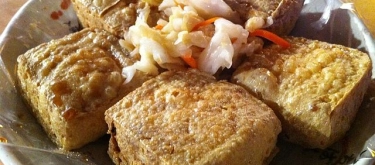Gochujang: Taste Profile, Aroma, Benefits and Health Risks
Gochujang is a traditional Korean fermented chili paste made from red chili powder, glutinous rice, fermented soybeans, and salt. Known for its bold combination of heat, sweetness, and umami, Gochujang is a cornerstone of Korean cuisine, adding depth and complexity to a variety of dishes.
What does Gochujang taste like?

Flavor Profile and Deep Taste Analysis of Gochujang
Gochujang’s flavor is a carefully balanced mix of spicy, sweet, salty, and umami, underpinned by a rich, fermented depth. The glutinous rice adds a mild sweetness that tempers the chili heat, while the fermented soybeans provide a savory, umami-rich foundation.
Key flavor components:
- Taste: The primary taste is a gentle heat from the chili powder, balanced by subtle sweetness and a deep, savory umami. The fermentation process enhances these flavors, creating a rich, almost "aged" complexity that makes Gochujang an excellent flavor enhancer in both traditional and modern dishes.
- Aroma: Gochujang has a warm, slightly smoky aroma, with hints of fermentation and a faint sweetness. This aroma complements its bold taste, adding to its depth.
- Texture: Thick, sticky, and paste-like, Gochujang has a smooth consistency that blends seamlessly into marinades, soups, and sauces.
How Can Gochujang Be Used in Cooking?
Gochujang is versatile and adds heat, sweetness, and depth to a wide range of dishes:
- Marinades: Often used as a base for marinating meats like beef, pork, or chicken, infusing them with a sweet and spicy flavor.
- Stews and Soups: Adds heat and umami to Korean dishes such as tteokbokki (spicy rice cakes) and kimchi jjigae (kimchi stew).
- Sauces: Used in dipping sauces and condiments, paired with ingredients like sesame oil, vinegar, and soy sauce.
- Stir-fry Dishes: Enhances the flavor of stir-fried vegetables, noodles, or rice dishes with its bold, spicy-sweet profile.
- Fusion Cuisine: Frequently incorporated into global recipes like burgers, tacos, and even pizza for a spicy Korean twist.
Health Benefits of Gochujang
Gochujang not only enhances flavor but also offers nutritional benefits:
- Rich in Probiotics: As a fermented product, Gochujang supports gut health and aids digestion.
- Low in Fat: Contains minimal fat, making it a flavorful option for health-conscious diets.
- Capsaicin Benefits: The chili in Gochujang contains capsaicin, known for boosting metabolism and potentially reducing inflammation.
- Nutrient Content: Provides essential vitamins and minerals like vitamin B and iron.
Are There Any Precautions When Consuming Gochujang?
While generally safe, there are a few points to consider:
- High Salt Content: Moderation is recommended for individuals monitoring sodium intake.
- Spice Sensitivity: The chili heat may be too intense for some; use sparingly if you’re sensitive to spice.
- Allergy Considerations: Contains soy, which may affect those with soy allergies.

How to Choose and Store Gochujang?
- Choosing: Look for high-quality Gochujang with a vibrant red color and a balanced mix of sweet, savory, and spicy flavors. Traditional varieties often provide the best depth.
- Storage: Keep Gochujang in a sealed container in the refrigerator to maintain freshness. Properly stored, it can last for several months.
Fun Facts About Gochujang
- Cultural Staple: Gochujang has been a part of Korean cuisine for over a thousand years, traditionally fermented in clay pots.
- Flavor Evolution: Its unique balance of heat, sweetness, and umami makes it a popular ingredient in fusion dishes worldwide.
- Symbol of Korean Cuisine: Gochujang is often referred to as one of the "mother sauces" of Korean cooking, alongside doenjang (soybean paste).






